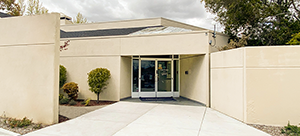Arthritis can make everyday tasks difficult and painful. Walking, driving, reaching for items in the grocery store and even getting dressed in the morning can become seemingly insurmountable challenges.
May is National Arthritis Awareness Month, a time to learn more about this debilitating condition that affects one in every five adults in the United States.
More than 100 different conditions affecting joints and surrounding tissues fall under the umbrella of arthritis, but they share a group of common symptoms. Recognizing the signs of arthritis is important for moving forward with diagnosis and treatment to improve your quality of life.
Types of Arthritis
The different forms of arthritis often share a symptom: inflammation in one or more joints. The primary signs of the disease are stiffness and pain in the joints that often get worse with age.
The most common forms of the disease — osteoarthritis and rheumatoid arthritis — cause damage in the joints through different mechanisms. Rheumatoid arthritis, an autoimmune condition, targets the joint linings, known as synovium. In osteoarthritis, cartilage in the joints begins to deteriorate.
Other forms of arthritis are caused by underlying conditions, including infections. Treatment and symptoms can vary among the types of arthritis. However, the primary goal is to lessen pain and other debilitating effects so individuals with the disease can remain independent.
Recognizing the Symptoms
Individuals suffering from the early joint pain of arthritis often believe they’ve sustained an injury. They may spend time and effort attempting to treat themselves with over-the-counter medications and other readily accessible remedies.
Recognizing the early signs of the disease is important for improving the long-term prognosis of arthritis. If you have any of the following symptoms, consult your doctor for further evaluation:
- Pain or stiffness in joints
- Tenderness, warmth or redness around joints
- Constrained range of motion in affected joints
- Unusual tiredness or malaise
- Bumps or lumps around joints
While different types of arthritis share common symptoms, your doctor will need to determine the specific form of the disease by examining you, reviewing your medical history and conducting diagnostic tests.
Living with Arthritis
If you’re diagnosed with arthritis, it’s important to become proactive in managing the condition so that you can continue living a full and active life. Numerous treatments are available to help relieve your symptoms and improve the function of your joints.
To determine the treatments that will work best, you may need to try several. Options include medications like nonsteroidal anti-inflammatory drugs and analgesics, physical therapy and surgery to repair or replace joints.
Some people find success with alternative therapies such as massage and acupuncture. The Arthritis Foundation notes that exercise and a healthy, anti-inflammatory diet also help some individuals combat the disease.
By recognizing the early signs and symptoms of arthritis, you can take steps to continue living your best life.




















